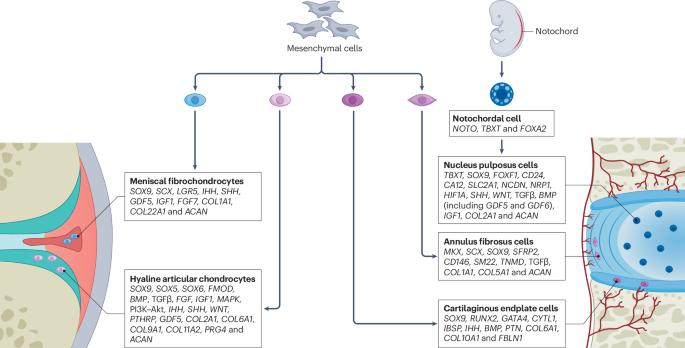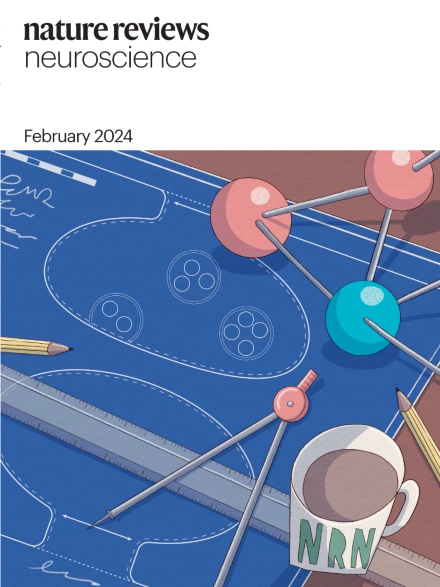Insights into chondrocyte populations in cartilaginous tissues at the single-cell level
IF 32.7
1区 医学
Q1 RHEUMATOLOGY
引用次数: 0
Abstract
Chondrocyte biology is being revolutionized by single-cell multi-omics technologies, revealing cellular heterogeneity within cartilaginous tissues. Although past research has implicated cellular heterogeneity in chondrocyte populations, advances over the past decade in single-cell transcriptomics now enable a more granular, functionally annotated classification of chondrocyte subtypes. These analyses provide crucial insights into the role of these subtypes in cartilage formation, maintenance and disease progression. Chondrocyte populations are implicated in tissue homeostasis, pathogenesis and responses to external stimuli, including pro-inflammatory mediators and novel therapeutic agents. This knowledge opens pathways for developing targeted treatments for diseases such as osteoarthritis and intervertebral disc disease. Insights into the molecular signatures of disease-critical chondrocyte populations provide a foundation for biomarker discovery and therapeutic targeting, and there are exciting opportunities for leveraging these findings to progress regenerative therapies. Spatial and temporal profiling of cellular markers, behaviour and metabolic activity will enhance understanding of disease pathogenesis and chondrosenescence and could possibly enable early intervention for osteoarthritis, thereby preventing irreversible joint damage. Future research must integrate advanced single-cell techniques with computational modelling to unravel the dynamic interplay of chondrocyte populations. These efforts could transform precision medicine in rheumatology, addressing the unmet clinical needs in cartilage-related diseases. This Review provides an update on chondrocyte heterogeneity in cartilaginous tissues in health, disease and senescence focusing on insights gained from single-cell analyses. The authors highlight how single-cell multi-omics techniques could reveal new biomarkers and therapeutic targets for conditions such as osteoarthritis and intervertebral disc degeneration.


在单细胞水平上对软骨组织中软骨细胞群的见解
单细胞多组学技术正在彻底改变软骨细胞生物学,揭示软骨组织内的细胞异质性。尽管过去的研究暗示了软骨细胞群体的细胞异质性,但过去十年单细胞转录组学的进展现在使软骨细胞亚型的更颗粒化,功能注释分类成为可能。这些分析为这些亚型在软骨形成、维持和疾病进展中的作用提供了重要的见解。软骨细胞群参与组织稳态、发病机制和对外部刺激的反应,包括促炎介质和新型治疗剂。这一知识为开发针对骨关节炎和椎间盘疾病等疾病的靶向治疗开辟了途径。洞察疾病关键软骨细胞群的分子特征为生物标志物的发现和治疗靶向提供了基础,并且利用这些发现来推进再生治疗有令人兴奋的机会。细胞标记物、行为和代谢活动的时空分析将加强对疾病发病机制和软骨衰老的理解,并可能使骨关节炎的早期干预成为可能,从而防止不可逆的关节损伤。未来的研究必须将先进的单细胞技术与计算模型结合起来,以揭示软骨细胞群的动态相互作用。这些努力可以改变风湿病的精准医学,解决软骨相关疾病未满足的临床需求。
本文章由计算机程序翻译,如有差异,请以英文原文为准。
求助全文
约1分钟内获得全文
求助全文
来源期刊

Nature Reviews Rheumatology
医学-风湿病学
CiteScore
29.90
自引率
0.90%
发文量
137
审稿时长
6-12 weeks
期刊介绍:
Nature Reviews Rheumatology is part of the Nature Reviews portfolio of journals. The journal scope covers the entire spectrum of rheumatology research. We ensure that our articles are accessible to the widest possible audience.
 求助内容:
求助内容: 应助结果提醒方式:
应助结果提醒方式:


